-
Posts
2,704 -
Joined
-
Last visited
Content Type
Profiles
Forums
Gallery
Events
Posts posted by Gregory
-
-
You have done very well without me, and much quicker than I ever did.. Sorry I did not reply sooner, but I did not expect you to progress this fast.
You have achieved a great balance between paint and natural wood.
-
popeye,
If you look at the pictures of a museum model back on page three, you can see how it's finished.
Mike, I will PM you about the stern decoration and the rudder.
The last picture I posted was from the site I linked to earlier.
-
popeye,
Not sure what you are alluding to, or how familiar you are with the Mary,
but the stern/transom gets very busy with trim and ornamentation,
as seen here:
Correct me if I am missing something with regard to what you are refering to.
-
Really looking nice..
-
Looks like it should finish out very nicely.. The tip from Popeye should go well also..
-
Mike,
Here is a Mary Build that I found very inspirational.
http://modelshipbuilder.la.coocan.jp/yacht-m2.htm
Make sure you click on " Making " just a little ways down from the top of the page..
-
The essential rigging would not be much different ( except for size and quantity ) from the
Victory.
If you can get something like Historic Ship Models by Wolfram zu Mondfeld,
It would give you a good line by line accounting for similar ships; which you could compare
to the plans you have and make adjustments as necessary
- aviaamator and mtaylor
-
 2
2
-
At the risk of hijacking your thread ( please let me know and I will delete ), I am working on a Mary, and in the rigging stage. I didn't document
well enough for a log, but I hope to present in the Gallery soon.
I was using veneer for the 2nd planking and did some spiling at the bow. I thought I achieved a pretty good effect for my first attempt at this,
though it is a little rough in spots.
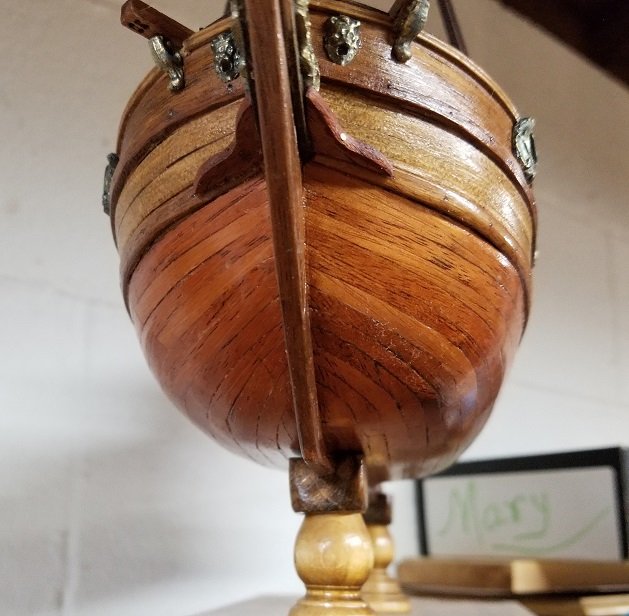
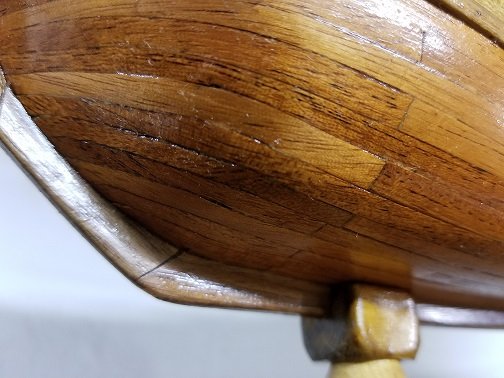
It takes some wide stock to do this. Up to three times the width of the plank, not to mention the waste from practicing.
- Mike Dowling, Cathead, zappto and 1 other
-
 4
4
-
- John Allen, BobG, mtaylor and 1 other
-
 4
4
-
It looks to me like it is in fact a topsail yard, with some kind of attempt at perspective in the drawing.
I think you would be hard pressed to find any kind of rigging plan that included a yard/boom as drawn..
Here is a link to what appears to be the same model, which sports a topsail, and a top gallant.
Not a lot of detail but, using standard practice should get you by..
http://www.pielcraftsmen.com/ordimages/salemodels.htm
P.S.
There are reasons to be critical of some of the details in Petersson's Fore & Aft rigging book,
however this over-all view of a similar rig, might give a basic idea of a rigging plan.
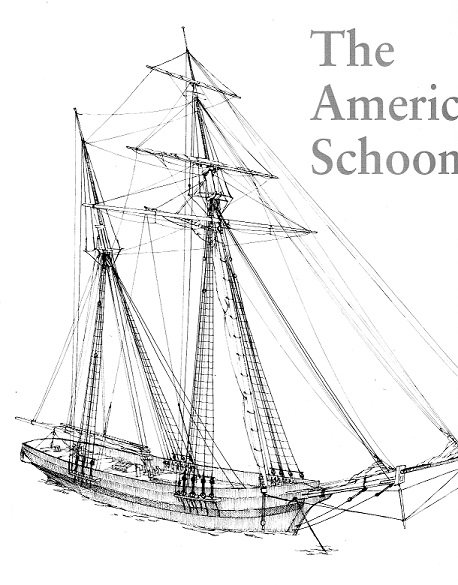
-
Quote
I wonder what would happen if you were even just a little off in alignment of the mast or deadeyes. Even a minor adjustment looks like it would pull the whole array out of wack.
Regards,
One way to address this, would be to make the shrouds before setting up the deadeyes on the channels.
-
Keep in mind, you don't really have to know why/how about every line on a ship. As the number of masts and sails increase, you have
the same basic principles repeated over and over.
Just pick a mast and a type of sail; main, top, stay, spanker, etc., and the basic principles, with a few exceptions will always apply.
This is not to say there won't be variations among countries and periods, but a 'lift' , a 'brace' a 'shroud' or whatever, won't really change that much,
because the work to be accomplished will be the same.
-
Detailed wood parts would really drive up the cost of a kit.
I have looked at a lot of kits over the years, and I don't recall any kit, at any price,
that included detailed wood parts.
The closest thing that I am aware of, are the kits that Chuck sells at his store. Syren Ship Model Company
He has items such as this Windlass which is part of the ' Cheerful ' package, but would not be out of place on a lot of ships at the same scale.
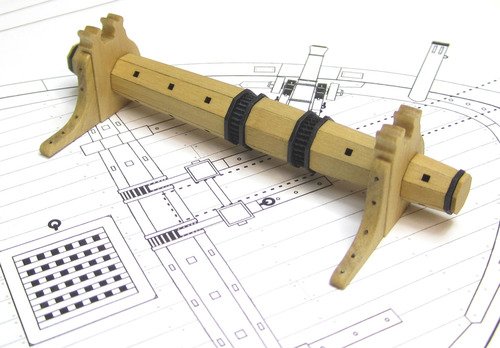
There are tons of ideas on this Forum for fabricating your own parts.
- mtaylor, Canute and Ryland Craze
-
 3
3
-
-
19 hours ago, xken said:
Gregory, if I understand correctly "for setting up properly on the mast" it does but you have to index the port and starboard mast loops in the proper sequence as you slip them on the mast when setting them in place. I hope this makes sense, that is one of the reasons I suggest in the instructions to tie the mast loops with a string before removing from the RATLINER once tied to keep them in sequence for later installing.

I apologize for my rush to judgement, without taking a closer look.
Now that I have seen your instructions, it clearly addresses any shortcomings that I wrongly assumed.
-
It doesn't appear to allow for setting up the shrouds properly on the mast.
How does it differ in principle from the (in)famous Loom-A-Line?
- Canute, davyboy and Jim Rogers
-
 3
3
-
I don't know if this painting is included in "The Low Black Schooner", but it is a contemporary painting located in the Peabody Essex Museum.
There is some limited zoom functionality at the above link, and the trailboard shows some scroll work, not apparent in the Bluejacket and other plans..
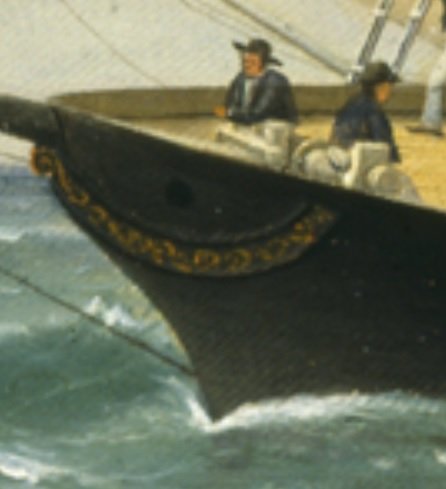
-
Nice work..
The design is typical of the various plans I have seen. I have seen numerous contemporary paintings, with insufficient detail to determine how accurate the design is.
Here is a photo from 1940. I suppose it is the result of modifications after 1851.
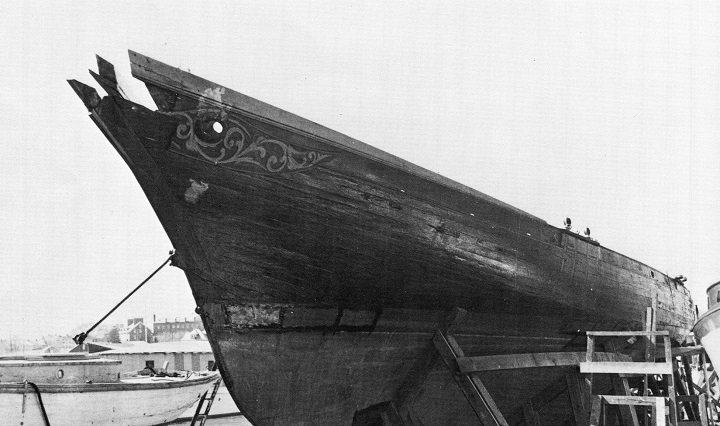
FWIW, Here is an image of the actual stern decoration that now resides in the New York Yacht Club
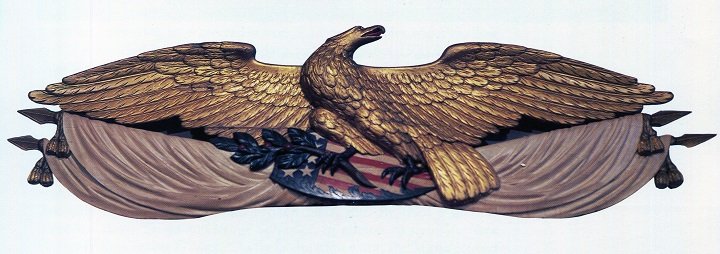
- tarbrush, gsdpic and Duanelaker
-
 3
3
-
-
On 11/23/2017 at 11:52 PM, mikiek said:
Michael - I was surprised to see that blocks are often seized to shrouds particularly higher up the mast. Can't be too sturdy but I guess it's good for some things.
Can't be too sturdy?
Consider that the shrouds are essentially tow ropes, pulling the ship through the water... Think about it..
-
Good find!
From the synopsis:
Quote....magnificent collection of drawings which depict every aspect of the ships' construction and rig. Information on the smallest item of equipment is to be found in these pages and is presented in a way which could only ever have been done by one who had first-hand experience.
-
-
David, Thanks for the interest and kind words..
The larger line is 18 threads. Made with three groups of 6.
The smallest line I can make is with 2 threads, ( smaller line in the picture ) and determined by the size of the thread itself, which I don't have the particulars on.
Of course, finer thread would yield some smaller line..
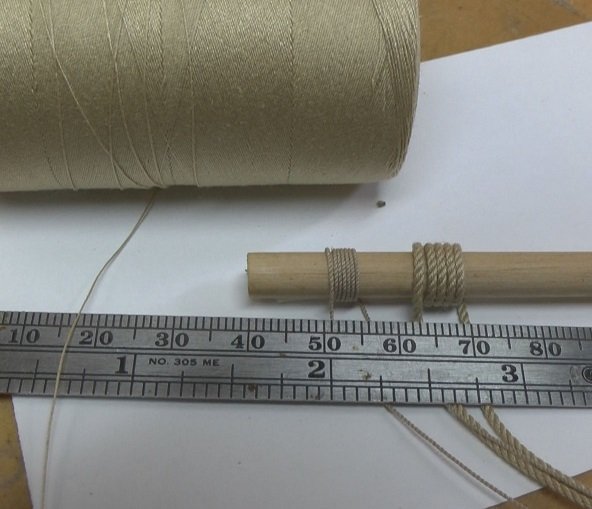
- Canute, Ryland Craze and mtaylor
-
 3
3
-
4 hours ago, wefalck said:
...Sewing threads or crochet yarns may consist of two (typically) or more strands, but the strands are not as tightly twisted as in a ropewalk. Therefore, they cannot be used directly. If you chance upon a three-strand yarn, you can unravel it and then treat it in your rope walk.
.....
Not sure why you have a problem with ' sewing ' thread..
It is typically what I use, with satisfactory results..
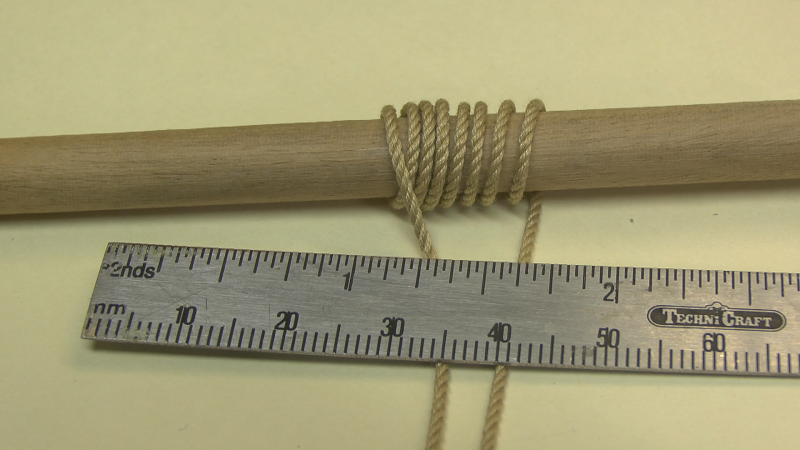
- Ryland Craze and mtaylor
-
 2
2

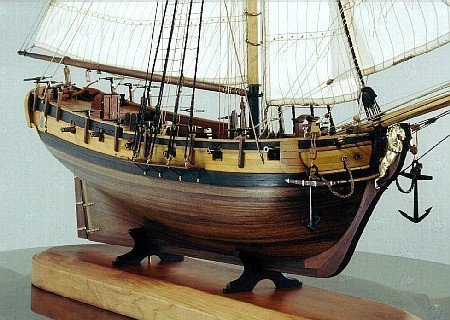
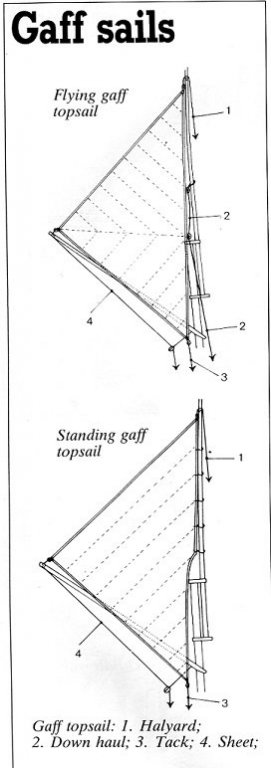
Yacht Mary by Mike Dowling - Mamoli
in - Kit build logs for subjects built from 1501 - 1750
Posted
Great build Mike!
I envy your timely perseverance, and ability to create a great result with essentially what was in the box.